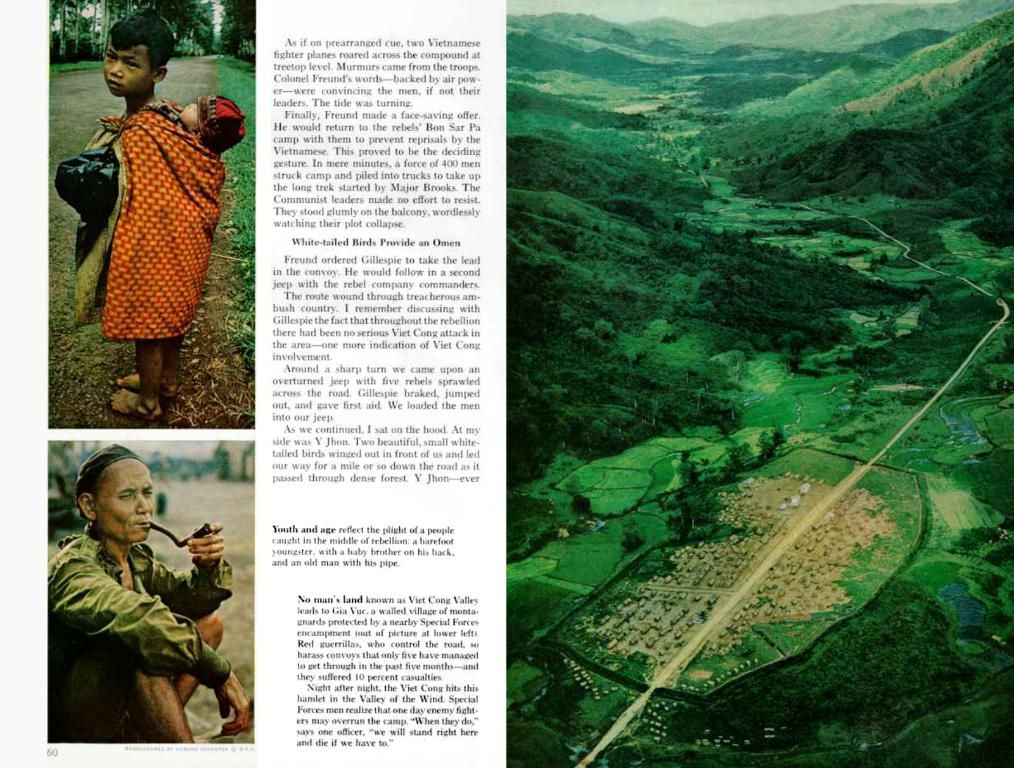Increased threat of forest fires in multiple counties
In the German state of Brandenburg, forest fire danger is on the rise again. A massive five districts – including Havelland, Potsdam-Mittelmark, Märkisch-Oderland, Oder-Spree, and Spree-Neiße – are currently under a severe fire risk level of 4, indicating a high danger. Elsewhere, a moderate forest fire threat persists.
The weather forecast for this weekend predicts dry and sweltering temperatures, with thermometers set to hover between 27 and 31 degrees Celsius. However, Sunday may offer some respite with heavy showers and thunderstorms.
Brandenburg is notorious as the state with the country's highest forest fire risk due to its extensive pine forests, scant rainfall, and sandy soil. As of the end of May, Brandenburg's fire departments have dealt with 125 forest fires already this season.
Climate change and persistent weather patterns are behind the escalating fire risk in Brandenburg. Recent trends of extended dry and warm spells set the stage for forest fires by desiccating vegetation and soil. Contemporary German climate adaptation strategy reports show that climate change is propelling the frequency and intensity of heatwaves while reducing precipitation, both fueling forest fire hazards. Consequently, Germany, and notably Brandenburg, is experiencing a shift in fire seasons, with earlier and more intense blazes.
Heatwaves, drought, and dry, dense vegetation are some of the factors underpinning the elevated forest fire risk in Brandenburg. The German government is tackling this issue through new forest management initiatives, aiming to transform 100,000 hectares of federal forest land by 2033.
Forecasters predict continued temperature increases and worsening drought conditions in Brandenburg, making the region even more susceptible to forest fires. In response, Germany and the EU are bolstering preventive measures. Brandenburg is a pioneer in utilizing the EU’s Civil Protection Mechanism for fire-risk assessments, indicating ongoing concerns regarding forest fires within the region.
National and European agencies are increasing monitoring and preparedness, including real-time risk analysis and deploying firefighting experts. However, new aerial firefighting equipment won’t be in service until 2026 and beyond.
In summary, Brandenburg's current and forecasted weather conditions – characterized by ongoing hot, dry periods and a climate trend toward increased heat and drought – are driving high forest fire risk. Authorities are responding with enhanced monitoring, preventive strategies, and long-term adaptation plans. There is no evidence of recent tornado or severe storm activity, directly impacting the forest fire risk in Brandenburg.
- The escalating forest fire risk in Brandenburg, as evidenced by the ongoing hot, dry periods and climate change trends toward increased heat and drought, can be addressed by the German government's new forest management initiatives aiming to transform environmental-science-based strategies for 100,000 hectares of federal forest land by 2033.
- As climate change and persistent weather patterns contribute to the worsening forest fire risk in Brandenburg, with science indicating a shift in fire seasons and more intense blazes, national and European agencies are increasing monitoring, preventive strategies, and long-term adaptation plans, including real-time risk analysis, deploying firefighting experts, and utilizing the EU’s Civil Protection Mechanism for fire-risk assessments.






